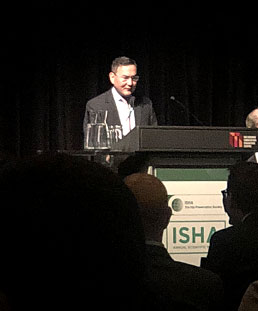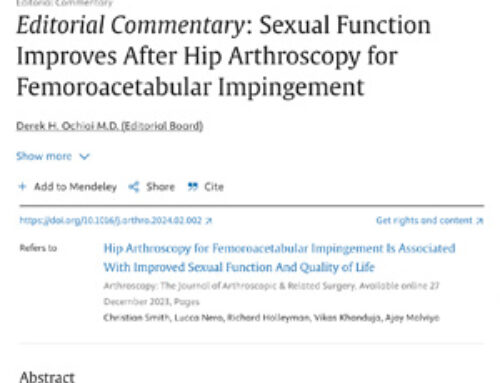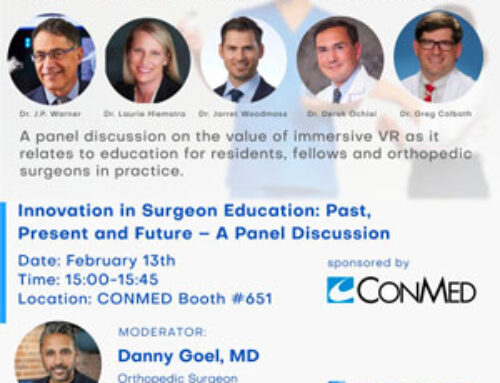 Recently, I had the privilege of speaking at an international hip arthroscopy and hip preservation society meeting in Melbourne, Australia, October 4-6, 2018. Besides the jet lag, it was a phenomenal experience. I was able to interact with world class surgeons from around the globe, gaining insights on how hip arthroscopy is utilized in countries. On the flight back, I reflected on why I feel teaching sports medicine and hip arthroscopy is important to me. However, I find that contributing to education has many benefits.
Recently, I had the privilege of speaking at an international hip arthroscopy and hip preservation society meeting in Melbourne, Australia, October 4-6, 2018. Besides the jet lag, it was a phenomenal experience. I was able to interact with world class surgeons from around the globe, gaining insights on how hip arthroscopy is utilized in countries. On the flight back, I reflected on why I feel teaching sports medicine and hip arthroscopy is important to me. However, I find that contributing to education has many benefits.
- It keeps you on your toes. It is one thing to do a labral repair surgery “the way you’ve always done it”, and it is quite another to be showing someone else that same procedure. The questions that come up force the teacher to critically look at their procedure (or diagnosis or choice of medication), and justify it. Because the student is looking at the procedure with less preconceived biases, sometimes these questions can give ideas or new ways of looking at a procedure, which can be used to modify the procedure and benefit the patient.
- It’s a way of giving back. I remember when I was a medical student and resident, and I am immensely grateful for the time and expertise that my mentors so freely gave to me. They did this out of kindness and the hope that their chosen profession would continue to grow and flourish. Hopefully, some of the surgeons that I have had the privilege of teaching will be the same that advance the field of sports medicine and further improve patient’s lives.
- It broadens your horizons. I’ve had the privilege of teaching hip arthroscopy techniques to surgeons from around the country and around the globe. Interacting with interesting people from different cultures has made me more culturally aware. I think it also has made me a better surgeon, as this exposure helped me to connect with my patients. In the DC area, we have a truly global population, and my patients are often temporarily in the area, before they go back to their home countries.
- It is helping patients, but on a broader scale. I am one person, and I have a finite amount of time in the day to see patients and perform surgery. By teaching other surgeons and future surgeons, I can be a small part of treating hundreds to thousands more, by improving their skills to treat their patients. They may also be involved in teaching, and the skills that they teach will help future generations.
- I GOT TO SEE A BABY KANGAROO!






